Find Your Perfect Face Oil: Expert Tips for Choosing and Using the Best One for You
I didn't start my natural skincare journey planning to become an expert in face oils. However, as I developed my own product line, I got deeper and deeper into the nuances of each carrier oil. They are all unique and stand out for different reasons - phytochemicals, fatty acid composition, natural scent, viscosity, etc.
That's why I have written this face oil guide - this is the most comprehensive guide to choosing and using face oils that you will find! Don't start shopping until you've read it.
BUT... to be clear, using oils for the face should be fun, not overwhelming - so don't get bogged down in the details! If you are looking for a quick-start guide, here is our list to get you started!
Quick Start: 3 Best Oils for Each Skin Type
The single-carrier-oil approach is as simple as you can get. If your entire daily beauty ritual includes only cleansing and a single carrier facial oil, your skin will be healthy, soft and glowing.
Irritated Skin
Start with: squalane, sunflower, meadowfoam
Read more: Best Oils for Sensitive or Irritable Skin
Shop bareLUXE: bare Essential Elevated Barrier Oil
Dry Skin
Start with: jojoba, plum, oat
Read more: Best Facial Oils for Dry Skin
Shop bareLUXE: Northern Rescue Elevated Recovery Oil
Oily Skin with Acne
Start with: abyssinian, squalane, borage
Read more: Best Face Oils for Oily or Acne Prone Skin
Shop bareLUXE: Product coming soon!
Start with: rosehip, pomegranate, evening primrose
Read more: Best Anti-Aging Face Oils for Mature Skin
Shop bareLUXE: Bakuchiol Serum and Vitamin C Oil
What is Face Oil?
A face oil is an anhydrous (contains no water) mixture of oils that may also contain oil-soluble, active ingredients, such as herbal extracts.
By not adding water or water-soluble ingredients, there is no need to add emulsifiers, solubilizers, surfactants, or preservatives. This helps give your skin a radiant glow with the fewest ingredients. For many people this is appealing because pure, natural face oils are as close to nature as you can get.
What is a Carrier Oil?
A carrier oil is a mild oil that doesn't have many of its own dramatic properties such as color or scent. Carrier oils high in antioxidants are especially healthy for the skin.
The term carrier oil originates from the aromatherapy world, where the purpose is to dilute essential oils so they can be used for the aroma while doing massage.
When developing bareLUXE specialized facial oils, I considered anything that could be used at 100% concentration on your face as a carrier oil and anything else as a specialized oil.
What is a Specialized Oil?
As I said above, specialized oils are plant-based oils with unique or outstanding properties that make them best used in diluted form.
Examples of specialized oils not generally used at 100% concentration are: broccoli seed oil (which has a strong odour), tamanu oil (which is thick and almost black), and sea buckthorn oil (which will stain your skin and clothes if used at high concentration).
They each have a specialized purpose and are effective in lower concentrations. They are still created using standard processes like cold-pressing, so they are not the same as essential oils.
What is an Essential Oil?
Essential oils are concentrated plant extracts that retain the natural smell and flavour, or "essence," of their source. These oils are usually obtained through steam distillation or solvent extraction.
Essential oils are often used in aromatherapy. Depending on the skin benefits and scent you're looking for, they may or may not be included in a face oil.
Essential oils are the most concentrated and contain very high levels of phytochemicals and volatile, aromatic compounds. They require knowledge and training to use safely and are not always safe to use on your face.

Understanding the Role of Face Oils in Skin Care
Oils are extracted from various seeds, nuts, kernels, and vegetables. Each is unique and contains different types and percentages of fatty acids, antioxidants, vitamins, phytochemicals, and minerals.
Cold pressing is the best method to extract phytonutrients from seeds. It's the least destructive extraction method that protects the delicate phytochemicals. Generally, the best face oils are cold-pressed and organic.
But, do they all possess such different compositions that they are each uniquely able to target individual skin concerns?
Yes and no.
This is a big question that took me down the rabbit hole learning about the difference between carrier oils and oil serums.
The short answer is yes, carrier oils are all unique. For example, pomegranate oil is one of the only sources of punicic acid; meadowfoam oil is high in eicosenoic acid, while borage and evening primrose oil are highest in GLA. Each unique carrier oil can be the star player in different products for different skin types and concerns.
However, carrier oils are passive in the quest for dramatic, results-based skincare. They are nourishing, protective, soothing, and lovely, but if you're looking for an active approach, you must look at oil serums and other products with more bioactivity and functional ingredients to target specific skincare concerns.
The Science Behind Face Oil
When delving into the science of facial oils, several key concepts stand out: the fatty acid composition, phytochemical profile, and their anti-inflammatory, antioxidant, and antibacterial/antifungal properties.
Let's break things down.
Fatty Acid Composition
Face oils are rich in fatty acids, the proportion of which can significantly influence their properties and benefits. There are three types of fatty acids: saturated, monounsaturated, and polyunsaturated, each with different effects on the skin.
Linoleic acid (a polyunsaturated fatty acid) is beneficial for oily and acne-prone skin, as it regulates sebum production and can unclog pores. Oleic acid (an Omega 9) is a bit thicker and feels richer, so it's much more moisturizing and better for dry skin. The ratio between the two is a major factor in determining the skin-feel, absorption rate, and whether it is suitable for oily or acne-prone skin.
Common fatty acids in most carrier oils include palmitic acid, stearic acid, and lauric acid. Palmitic and stearic acids, both saturated fats, help improve skin texture and appearance. Lauric acid has antimicrobial properties.
Not all oils fit into these typical carrier oil compositions. For instance, jojoba oil is technically a wax ester, not an oil, and it's uniquely composed mostly of eicosenoic acid, which closely resembles human sebum. Pomegranate oil contains a rare Omega-5 fatty acid called punicic acid, with strong anti-inflammatory properties. Tamanu oil is another unique carrier oil, as it contains a rare lipid called calophyllic acid known for its wound-healing properties.
These unique oils underscore the diversity and potential benefits of carrier oils in skincare.
Phytochemical Profile
Carrier oils are rich in bioactive compounds like polyphenols, flavonoids, and sterols, which each provide a range of skincare benefits.
Estimating the total number of phytochemicals in plant oils is challenging due to the immense diversity of plant species and the complexity of their chemical makeup. However, it's safe to say that there are thousands of different phytochemicals present in the wide range of plant oils used in skincare and other industries.
Polyphenols such as resveratrol in grape seed oil have potent antioxidant properties that protect skin from free radical damage.
Flavonoids like silymarin in milk thistle oil offer additional antioxidant protection and can help soothe inflammation.
Additionally, sterols, or plant steroids, support the skin barrier. One example is beta-sitosterol, a phytosterol found in oils like soybean and avocado, that helps retain moisture in the skin and reduce inflammation.
These bioactive compounds contribute significantly to the therapeutic properties of carrier oils in face care, aiding skin protection, hydration, and soothing inflammation.
Regulation of Sebum Production
The sebaceous glands in our skin produce a natural oil called sebum. Genetics and hormones decide how much (or how little) sebum you produce.
Sebum moisturizes, waterproofs, and protects your skin.
Sebum is composed of 57% fatty acids, 26% natural waxes, 12% squalene, and 4.5% cholesterol. Clogged pores come from a buildup of sebum and dead cells.
The skin's sebum production is largely controlled by hormonal signals, particularly androgens (sex steroids), and is not directly controlled by the application of oils. However, the application of oil influences the skin's perceived need for additional sebum.
Applying oil to your face effectively moisturizes the skin and creates a protective barrier that prevents water loss. This signals to your skin that there's no need to produce excess sebum, thereby reducing oiliness.
Some oils, such as jojoba, closely mimic the structure of human sebum, which tricks the skin into believing it's produced enough oil, thereby reducing sebum production.
While cleansing and exfoliating the skin removes excess sebum and dead cells, it is important to know that over-washing, over-scrubbing, or using harsh cleansers can strip and dry out your skin enough that it starts producing even more sebum. A damaged skin barrier will make acne worse.
Moisturizing and TEWL Prevention
The skin's outermost layer, the stratum corneum, functions as a natural barrier that protects underlying tissue from infection, dehydration, chemicals and mechanical stress. This barrier also regulates transepidermal water loss (TEWL), the process of water evaporation from the skin's surface.
Face oils support the skin barrier and help prevent TEWL in several ways. The lipids in face oils closely resemble those in the skin's lipid matrix, consisting of ceramides, cholesterol, and fatty acids. By replenishing these lipids, face oils maintain the integrity of the skin barrier.
Face oils form a light, occlusive layer on the skin's surface, reducing evaporation and thus decreasing TEWL.
Face oils also act as emollients, filling in gaps between skin cells in the stratum corneum. This results in a smoother, more hydrated skin surface.
Essential fatty acids (that the body cannot produce on its own) are crucial for the production of ceramides, a type of lipid that plays a key role in maintaining the skin barrier and preventing TEWL. Oils high in linoleic acid directly support the production of your own natural ceramides. PLUS, some oils even contain natural ceramides, so it's a win-win situation.
In addition to these mechanisms, the antioxidants found in face oils protect the skin barrier from damage caused by environmental stressors, such as UV radiation and pollution.
Anti-Inflammatory and Antioxidant Effects
Face oils each possess potent anti-inflammatory and antioxidant properties due to their bioactive compounds.
Inflammation is a common issue that causes redness, irritation, and worsens conditions such as acne and rosacea. Certain oils, like rosehip and argan, are rich in linoleic acid, an omega-6 fatty acid that has been shown to have anti-inflammatory properties. Gamma-linolenic acid, found in borage and evening primrose oil, also reduces inflammation. These fatty acids work by reducing the production of pro-inflammatory molecules called cytokines.
Antioxidants play a crucial role in protecting the skin against oxidative stress caused by environmental factors like UV radiation and pollution. Oxidative stress causes premature aging, skin damage, and various skin conditions. Oils like pomegranate and sea buckthorn are rich in antioxidants such as vitamin E, carotenoids, and polyphenols. These antioxidants neutralize harmful free radicals, preventing them from damaging skin cells and collagen, thus helping to maintain skin health and reduce signs of aging.
Antibacterial and Antifungal Effects
Several face oils showcase potent antibacterial and antifungal properties, which can be advantageous for individuals with acne-prone skin. For instance, neem oil is renowned for its extensive antimicrobial properties. It is rich in compounds like nimbin and azadirachtin, which have been shown to effectively combat a variety of bacteria and fungi, including Propionibacterium acnes, the bacteria primarily responsible for acne.
Likewise, thyme oil, particularly thymol, one of its main active constituents, has been studied extensively for its antibacterial properties. Thymol disrupts the integrity of bacterial cell membranes, inhibiting their growth and eventually leading to their destruction.
Jojoba oil regulates the skin's natural oils and prevents the overgrowth of Malassezia, a type of yeast implicated in conditions such as dandruff and seborrheic dermatitis. Additionally, some essential oils are recognized for their robust antifungal properties.
Benefits of Oil for the Face
The skin health benefits of face oil are numerous, and all stem from the long list of physiologic properties discussed in the section above.
These are the many skin benefits of facial oils:
- Locks in moisture and prevents water loss
- Strengthens and repairs the skin barrier (which improves skin hydration)
- Antioxidants protect from free radicals and environmental damage
- Evens out skin tone and reduces discoloration
- Eliminates dull skin and brightens for a radiant glow
- Enhances collagen production and improves elasticity which reduces the look of fine lines and wrinkles
- Enhances absorption of other active ingredients in your beauty products
- Creates a dewy finish when used before foundation
- Regulates your natural sebum production
- Reduces acne breakouts and blemishes (due to the anti-inflammatory, antibacterial, antifungal, and sebum-regulating properties)
- May reduce the appearance of scars
- Improves overall skin texture and softness
- Soothes sensitive skin and reduces inflammation
Face Oil: A Game-Changer for Skin Hydration
Hydration and moisturization are different.
Technically speaking, when something is marketed as a hydrating face oil, the wording used is incorrect. This is because oils do not directly hydrate the skin. That really is a semantic debate, however, because using face oils will result in healthy skin that's more hydrated.
Hydration is determined by how much water stays within your cells. Dehydration is due to water loss and is caused by low humidity, aging, UV exposure, low water intake, hot showers, air-conditioned environments, etc. Humectants, such as hyaluronic acid, work by pulling moisture from the air and bringing it to your skin.
Even oily skin can become dehydrated.
Skin dryness is determined by the amount of oil present. Dry skin may feel rough and look flaky. Moisturization traps and seals moisture while building the skin's protective barrier to prevent water loss. Skin that is damaged and irritated will lose water. Dry skin needs emollients to help re-establish the broken barrier.
Face oils work as emollients and moisturize your skin. However, they still improve your overall skin health and hydration because they lock it in and prevent water loss.
This is why face oils are so beneficial for all skin types.
Can Facial Oil Replace Moisturizer?
Occasionally. For some people, using face oils alone without other products is enough to keep the skin both fully hydrated and moisturized.
However, even with the simplest skinimalism routines, you often need to add a product with humectants. When layering products with face oils, use the oil last so you seal in all the water-containing products.
Do Facial Oils Clog Pores
We've taken a deep-dive into the world of non-comedogenic oils, but here are the key things to know:
The degree to which a carrier oil causes clogged pores can be classified according to a scale ranging from 0 (extremely unlikely) to 5 (likely).
Oils with a rating of 0-1 are best for all skin types and should be the oils of choice if you have oily skin. They are often referred to as "dry oils" because they are light and penetrate quickly. The chance of clogging pores is extremely low and they are the best for acne and blemish-prone skin.
Oils in the 2-3 range are best for people with normal, dry, or mature skin. They feel a bit heavier at first but will still absorb without leaving a greasy feel. Clogged pores are still unlikely for most people.
Anything rated 4 and 5 should usually be avoided in face products. An example is coconut oil, which is great for your hands and body, but best avoided for your face.
Comedogenic ratings are controversial for several reasons:
- These ratings often rely on tests performed on rabbit ears, which are more sensitive than human skin, potentially leading to an overestimation of comedogenicity.
- The concentration of an ingredient, which can significantly influence its comedogenicity, is not taken into account. A face oil that has 2% coconut oil is very different than using full-strength coconut oil on the face.
- Individual skin differences also come into play, as what may clog pores in one person might not in another.
- Ingredient quality is another factor. Things like filtration and refining will influence comedogenicity.
- The overall formulation of a product and the health of an individual's skin barrier can significantly impact the effects of supposedly comedogenic ingredients.
It's also important to remember that pore-clogging doesn't automatically lead to acne. Therefore, while comedogenic ratings can be a useful guideline, they should not be the sole determinant when selecting skincare products.
Debunking 3 Face Oil Myths
MYTH: All Face Oils are 100% Safe
The Truth: Carrier oils are safe. Some, like sunflower, are extremely unlikely to cause issues and even studied in the hospital population for newborn babies.
However, there is always a "but"... as products get more and more complex and contain higher numbers of ingredients, risks may increase for things like irritation.
Some people may have allergies to certain oils, particularly those derived from nuts. Additionally, overuse of certain essential oils can lead to skin sensitization, causing redness, irritation, or allergic reactions.
Always perform a patch test when trying a new oil, and stop using it if you notice any adverse reactions.
If you're prone to allergy, eczema, or irritation - be careful with essential oils, they may make a product smell amazing, but they are a regular culprit for reactions.
Tea-tree oil is an example that is known to be sensitizing, which means it might work at first, but it can cause inflammation and skin reactions over time.
Another example is babchi seed carrier oil which contains psoralen, a skin irritant. If you're looking to use the amazing ingredient bakuchiol, best to find products containing the pure version and skip the babchi carrier oil.
If you have known allergies or an underlying medical skin disorder, discuss new products with your dermatologist.
MYTH: All Facial Oils Are Vegan and Cruelty-Free
The Truth: Most are, but watch the ingredient lists! Emu oil, lanolin, and beeswax might make their way into your oil-based face products. There are vegan alternatives to emu oil that are just as effective.
MYTH: All Face Oils Are Natural and Eco-Friendly
The Truth: If you're shopping for a commercially prepared face oil, watch out for the ingredient list. A variety of synthetically derived oils and oil-soluble emollients, some of which originate from petroleum, include PEG compounds, or have potential for bioaccumulation, are used in facial oils.
These include mineral oil and petrolatum, both of which are derived from crude oil. PEG (polyethylene glycol) compounds, often used as emulsifiers or penetration enhancers, are also synthetically derived.
Some synthetic oils, such as silicone-based oils like dimethicone, while providing a smooth application and barrier protection, have been scrutinized for their potential to bioaccumulate in the environment.
There is also a dark-side to the plant-based skincare industry that stems from the rampant consumerism and push to rapidly produce the latest 'skin superfood' ingredient. This is why conscious consumerism and buying from brands who are transparent about their corporate ethics is so important.
It's crucial to recognize these components when choosing skincare products, especially for individuals aiming for a pure and natural skincare routine or those who are environmentally conscious.
How to Use Face Oil
If you're trying to simplify your routine and get down to a single product or two, facial oils are essential to your routine.
Beauty routines often change based on skin type, condition, and the season of the year. Hormones contribute to skin needs and people who menstruate have cyclic changes.
You may find you need a more occlusive or heavier oil at certain times of the year. However, even in the summer months, light facial oils are important to help prevent water loss from your tissues.
Step-by-Step Guide: How to Apply Face Oil
- Cleanse: Always start with a clean face. Remove any makeup and cleanse your skin with a gentle, pH-balanced cleanser.
- Tone: After cleansing, apply a toner to balance your skin's pH levels and prep your skin for the face oil. Some people choose to skip toning, which is a personal preference. They're not essential.
- Serums and Moisturizers: If you use a water-based serum, apply it next. Moisturizers and lotions are often a mix of oil and water-based ingredients, but still best to apply before your oil.
- Face Oil: Now it's time for the face oil. Place a few drops (typically 2-3) onto your fingertips. Warm the oil by gently rubbing your fingers together. Gently press the oil into your skin, starting from the cheeks and moving to the forehead, nose, and then chin. Don't forget your neck and décolletage. Use a light patting motion rather than rubbing.
- Sunscreen: If you're applying face oil in the morning, finish off with a broad-spectrum sunscreen to protect your skin from UV damage.
Tips and Tricks for Maximizing the Benefits of Face Oil
- Less is More: When it comes to face oils, a few drops are usually enough to cover the entire face. Applying too much can leave your skin feeling greasy. Oilier skin types should start with 2 drops at night. Dry skin types can start with 3 drops twice a day.
- Choose the Best Face Oil for Your Skin Type: Different oils suit different skin types. We outline the best oils for each skin type in our other articles (posted below).
- Use at Night: While you can use face oils both morning and night, many people prefer to use them at night. This gives the oil plenty of time to sink into the skin without interference from makeup or other daytime products.
- Mix with Your Moisturizer: If you find that your face oil isn't absorbing as well as you'd like, try mixing a few drops with your moisturizer.
- Store Correctly: Keep your face oil out of direct sunlight and in a cool, dry place to maintain its efficacy. Most face oils have a shelf life of 6-12 months once opened.
- Patch Test: Always perform a patch test when trying a new oil to ensure it doesn't irritate your skin or cause an allergic reaction.
Are there oils that are bad for the face?
Potentially yes. If you're using any of the oils on this list and they're working for you, quitting isn't necessary. However, here is our list of 18 Worst Oils for the Face with some good explanations for why we prefer the ones listed above.
How do you choose an oil for a specific purpose like massage?
It's usually fine to just stick with the same oil for whatever purpose you need it for. For example, your favourite oil would be fine for different purposes like guasha, face rolling, or massage. These same principles also apply to men's face oils, beard care, the best hair oils, and the best cleansing oils.

Final Thoughts: Is Face Oil Right for You?
bareLUXE is proud to be a specialist in face oils. There are innumerable options out there and trying new ones is so much fun!
If you're brand-new to using face oil or are worried about your complexion remember this:
- Keep it simple: start with 100% squalane
- Less is more: start with 2-3 drops at bedtime
After that, the world becomes really exciting and trying different oils (either from your favourite brand or DIY making them at home) is both enjoyable and super-beneficial for your skin.
Most skin types tolerate oils beautifully and natural face oils are an amazing addition to your skincare routine to help restore your natural glow.
Oils are key ingredients in many important skincare products, so eliminate the middle-man and add pure oils to your beauty ritual!
Discover the best face oils with bareLUXE Skincare.
We specialize in scientifically-formulated face oils, merging traditional wisdom with modern data to create oils for every skin type and concern.
Transform Your Beauty Ritual and Explore Our Award-Winning Collection Now
References
Lin TK, Zhong L, Santiago JL. Anti-Inflammatory and Skin Barrier Repair Effects of Topical Application of Some Plant Oils. Int J Mol Sci. 2017 Dec 27;19(1):70.
Diana Draelos Z, Gunt H, Levy SB. Nature-based botanical facial oil oxidative stress protection. J Cosmet Dermatol. 2021 Feb;20(2):522-525. doi: 10.1111/jocd.13879. Epub 2020 Dec 21.
Vaughn AR, Clark AK, Sivamani RK, Shi VY. Natural Oils for Skin-Barrier Repair: Ancient Compounds Now Backed by Modern Science. Am J Clin Dermatol. 2018 Feb;19(1):103-117.
Nurzyńska-Wierdak R, Pietrasik D, Walasek-Janusz M. Essential Oils in the Treatment of Various Types of Acne-A Review. Plants (Basel). 2022 Dec 24;12(1):90.
Moore EM, Wagner C, Komarnytsky S. The Enigma of Bioactivity and Toxicity of Botanical Oils for Skin Care. Front Pharmacol. 2020 May 29;11:785.
Couteau C, Diarra H, Lecoq M, Ali A, Bernet M, Coiffard L. The Role of Essential Oils in Homemade Cosmetics: A Study of 140 Recipes. J Clin Aesthet Dermatol. 2023 Jan;16(1):18-24.
Blaak J, Staib P. An updated review on efficacy and benefits of sweet almond, evening primrose and jojoba oils in skin care applications. Int J Cosmet Sci. 2022 Feb;44(1):1-9.
Poljšak N, Kočevar Glavač N. Vegetable Butters and Oils as Therapeutically and Cosmetically Active Ingredients for Dermal Use: A Review of Clinical Studies. Front Pharmacol. 2022 Apr 25;13:868461.
Michalak M. Plant-Derived Antioxidants: Significance in Skin Health and the Ageing Process. Int J Mol Sci. 2022 Jan 6;23(2):585.
Sarkar R, Podder I, Gokhale N, Jagadeesan S, Garg VK. Use of vegetable oils in dermatology: an overview. Int J Dermatol. 2017 Nov;56(11):1080-1086. doi: 10.1111/ijd.13623. Epub 2017 Apr 19. PMID: 28421610.
Mack Correa MC, Mao G, Saad P, Flach CR, Mendelsohn R, Walters RM. Molecular interactions of plant oil components with stratum corneum lipids correlate with clinical measures of skin barrier function. Exp Dermatol. 2014 Jan;23(1):39-44.
Guidoni M, de Christo Scherer MM, Figueira MM, Schmitt EFP, de Almeida LC, Scherer R, Bogusz S, Fronza M. Fatty acid composition of vegetable oil blend and in vitro effects of pharmacotherapeutical skin care applications. Braz J Med Biol Res. 2019 Feb 14;52(2):e8209.
Ayanlowo O, -Adeife OC, Ilomuanya M, Ebie C, Adegbulu A, Ezeanyache O, Odiase O, Ikebudu V, Akanbi B. African oils in dermatology. Dermatol Ther. 2022 Mar;35(3):e14968.
Stallings AF, Lupo MP. Practical uses of botanicals in skin care. J Clin Aesthet Dermatol. 2009 Jan;2(1):36-40.
Ferreira MS, Magalhães MC, Oliveira R, Sousa-Lobo JM, Almeida IF. Trends in the Use of Botanicals in Anti-Aging Cosmetics. Molecules. 2021 Jun 11;26(12):3584.
Nong Y, Gahoonia N, Rizzo J, Burney W, Sivamani RK, Maloh J. Prospective Evaluation of a Topical Botanical Skin Care Regimen on Mild to Moderate Facial and Truncal Acne and Mood. J Clin Med. 2023 Feb 13;12(4):1484.
Dr. Heather Smith developed her love for skinimalism and clean beauty years ago when she began making home remedies for her newborn's eczema. She is an expert in natural ingredients and active botanicals and has now launched bareLUXE Skincare - a full line of effective oil serums. She dedicates this blog to consumers who are researching ingredients and working to make their beauty ritual more natural and sustainable.

MEDICAL DISCLAIMER
This content is for informational and educational purposes only. It is not intended to provide medical advice or to take the place of such advice or treatment from a personal physician. All readers/viewers of this content are advised to consult their doctors or qualified health professionals regarding specific health questions. Neither Dr. Smith nor the publisher of this content takes responsibility for possible health consequences of any person or persons reading or following the information in this educational content. All viewers of this content should consult their physicians about their skincare concerns and routines.


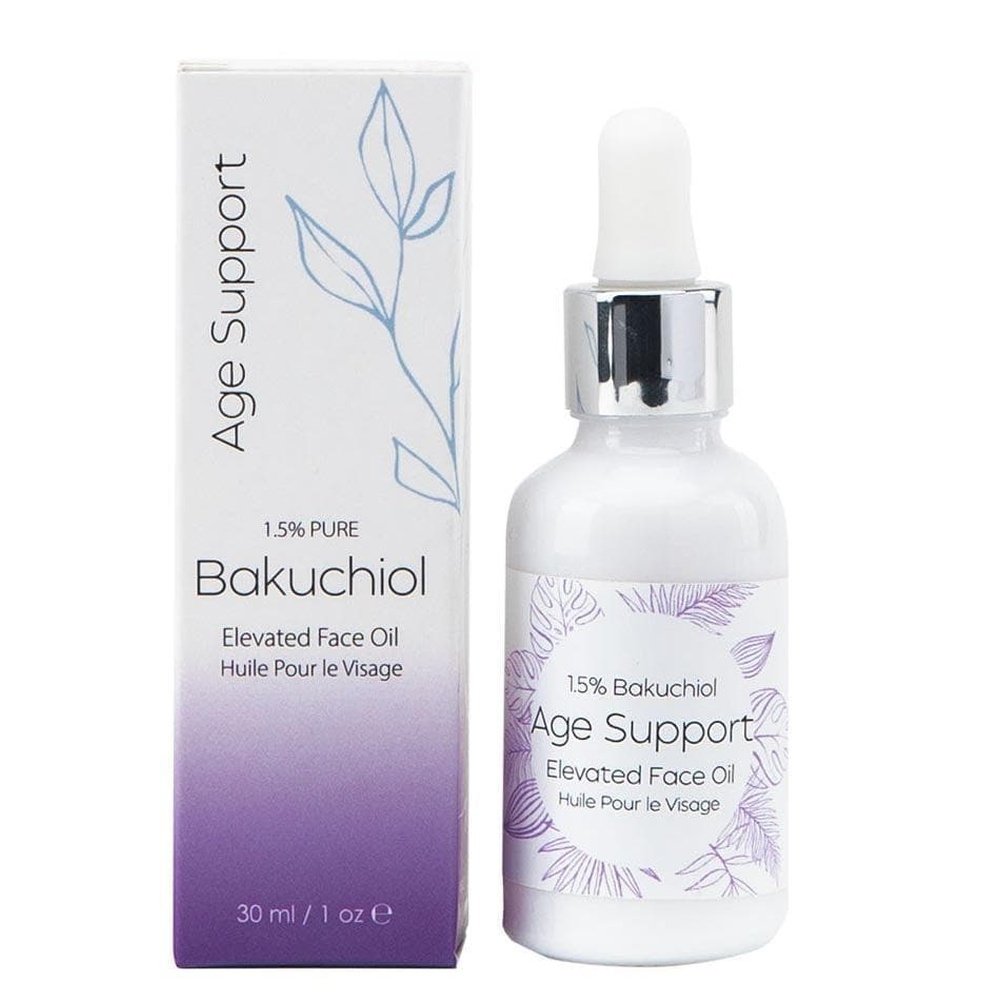
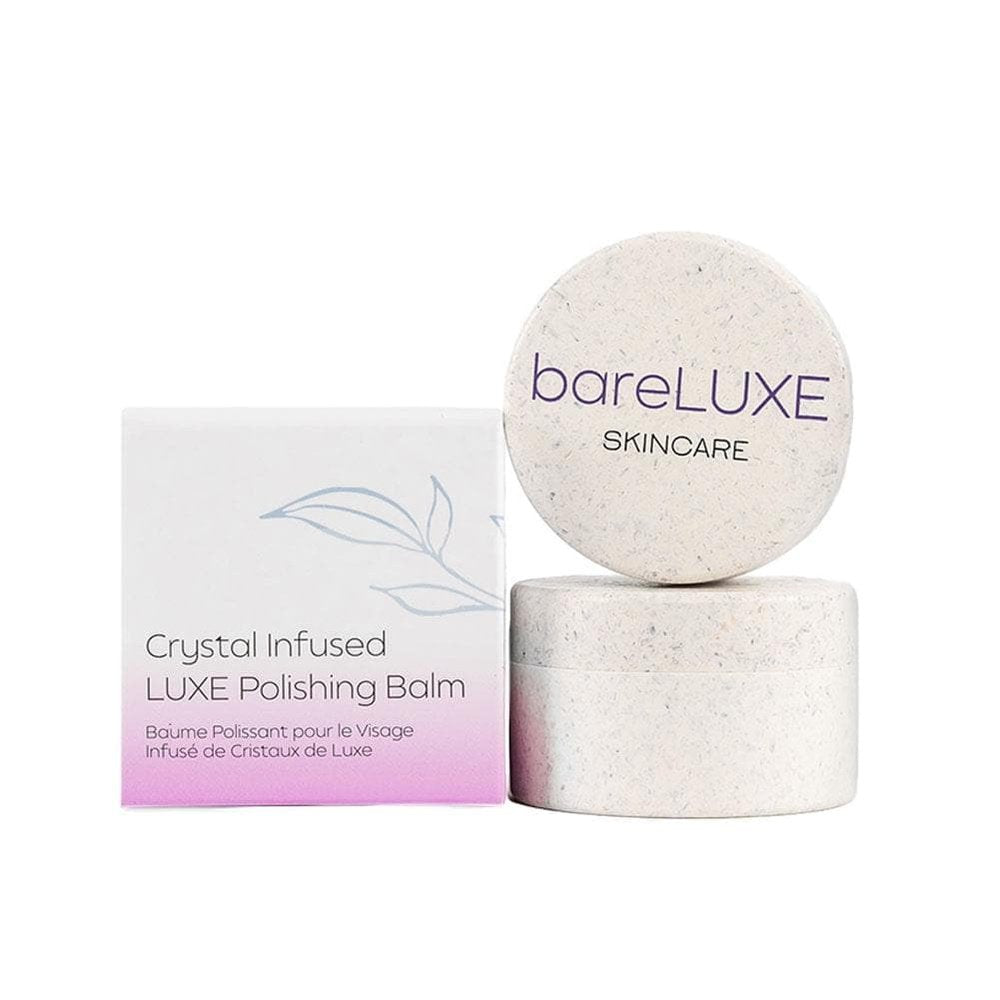
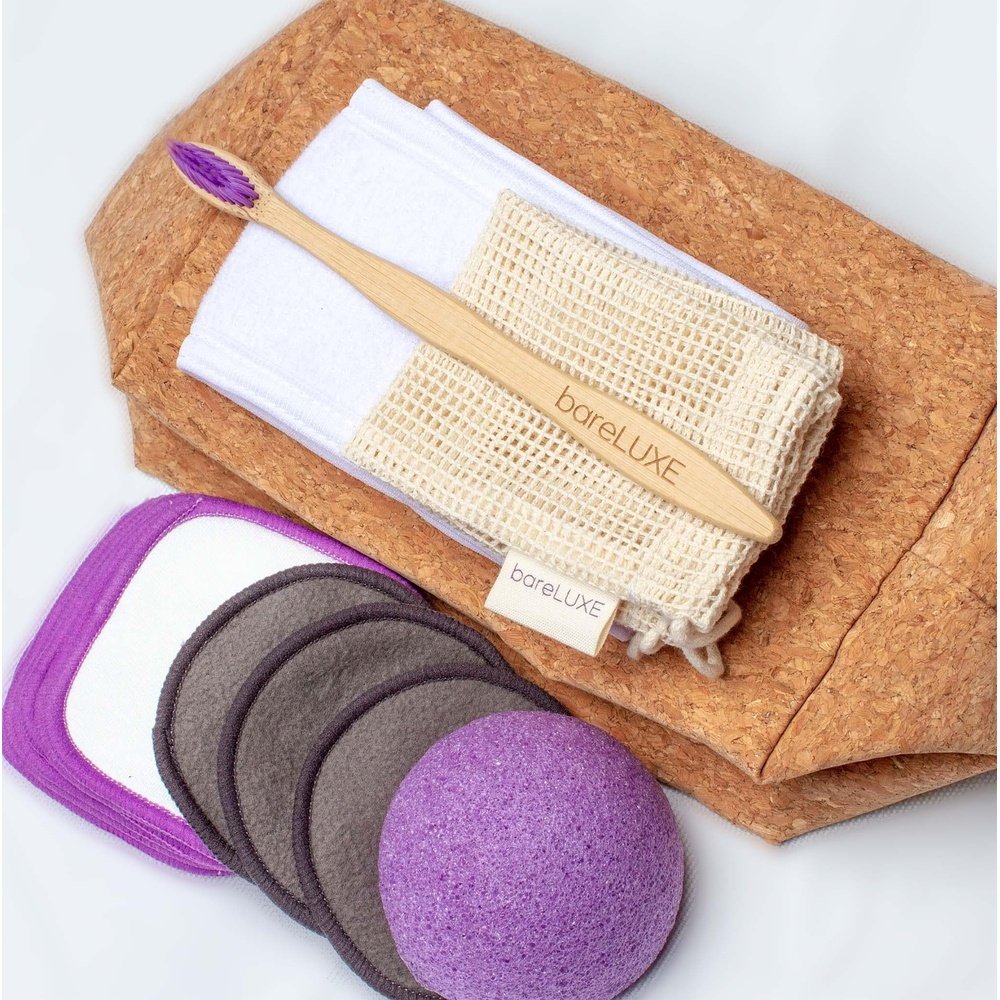
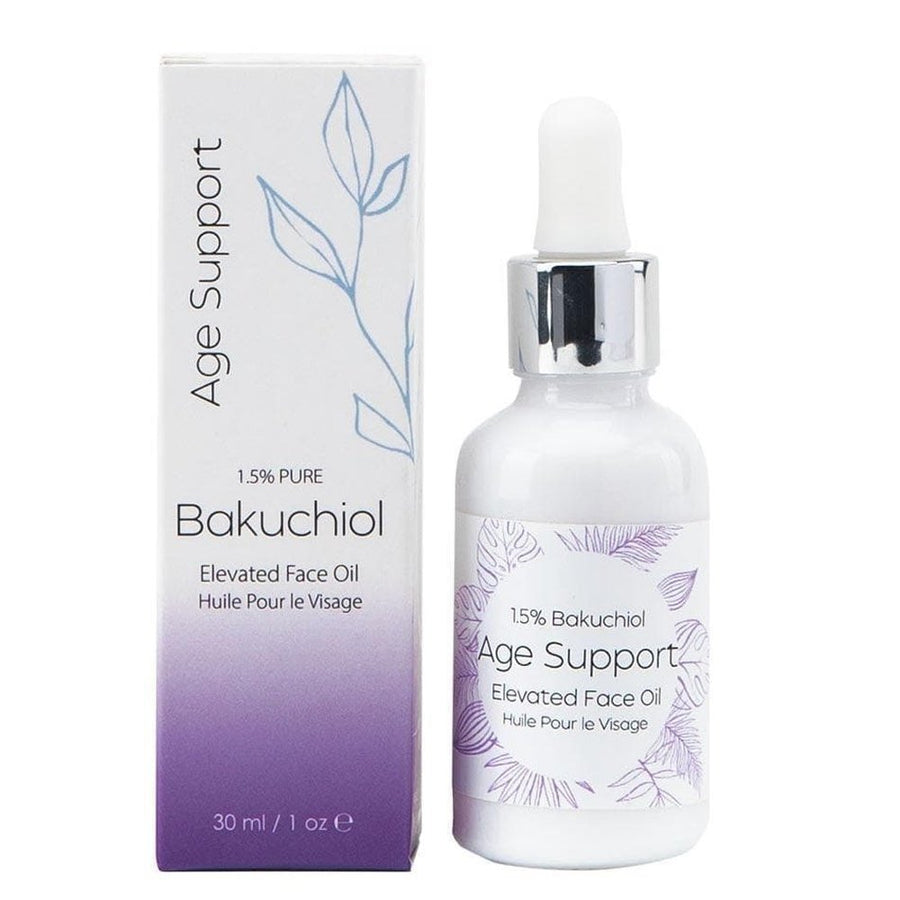
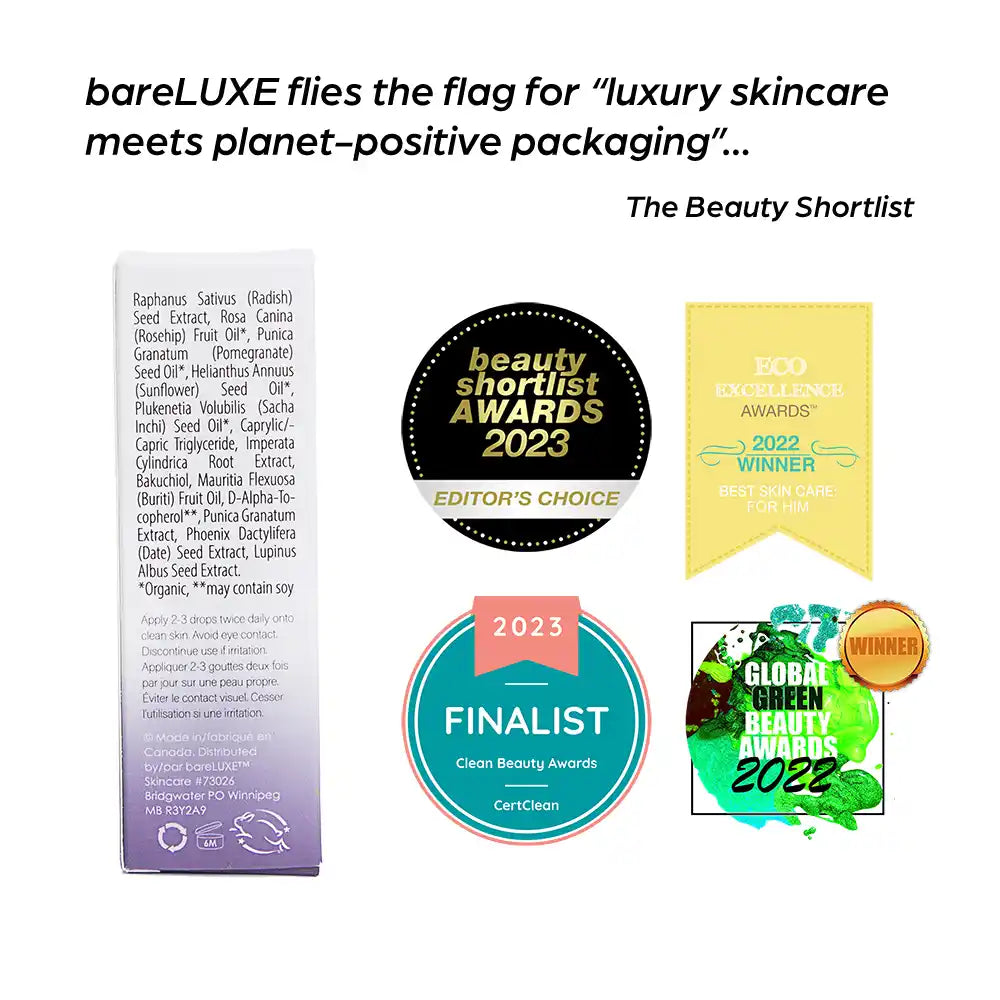
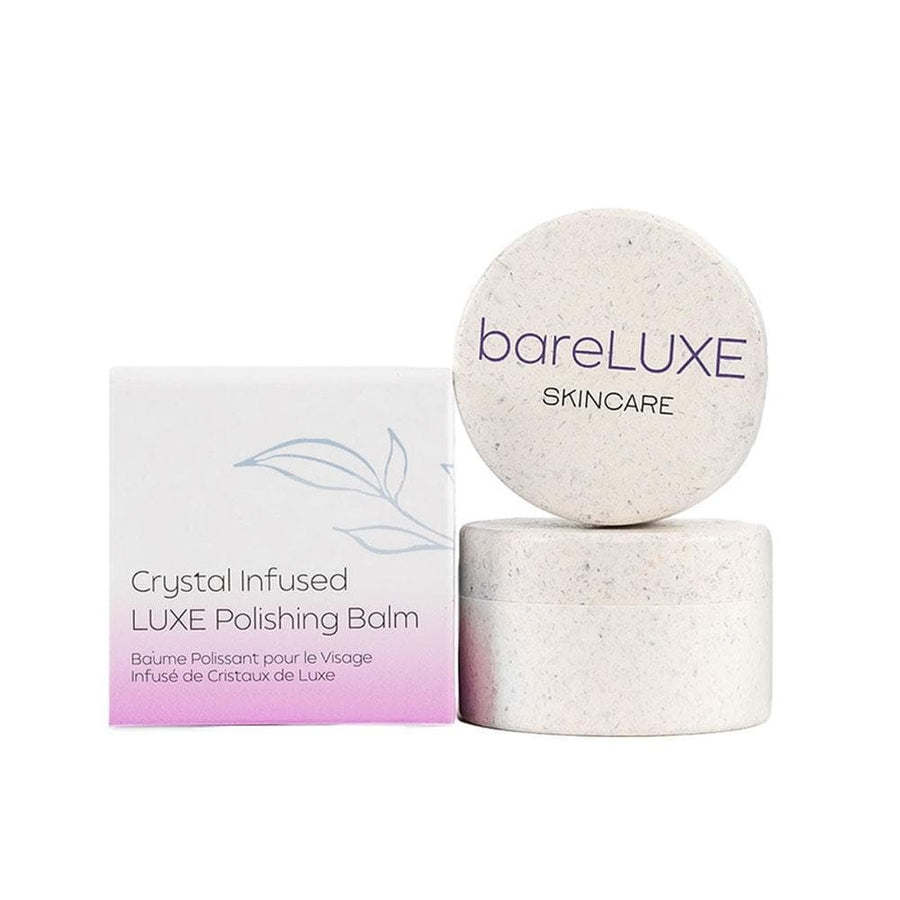
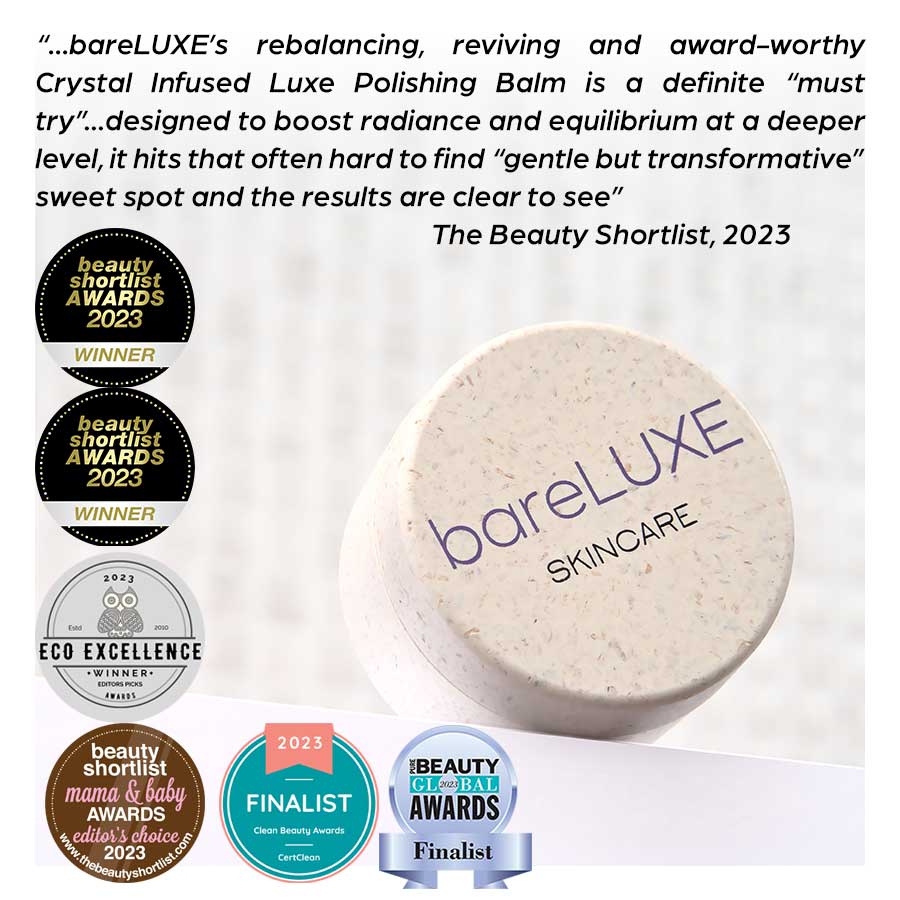
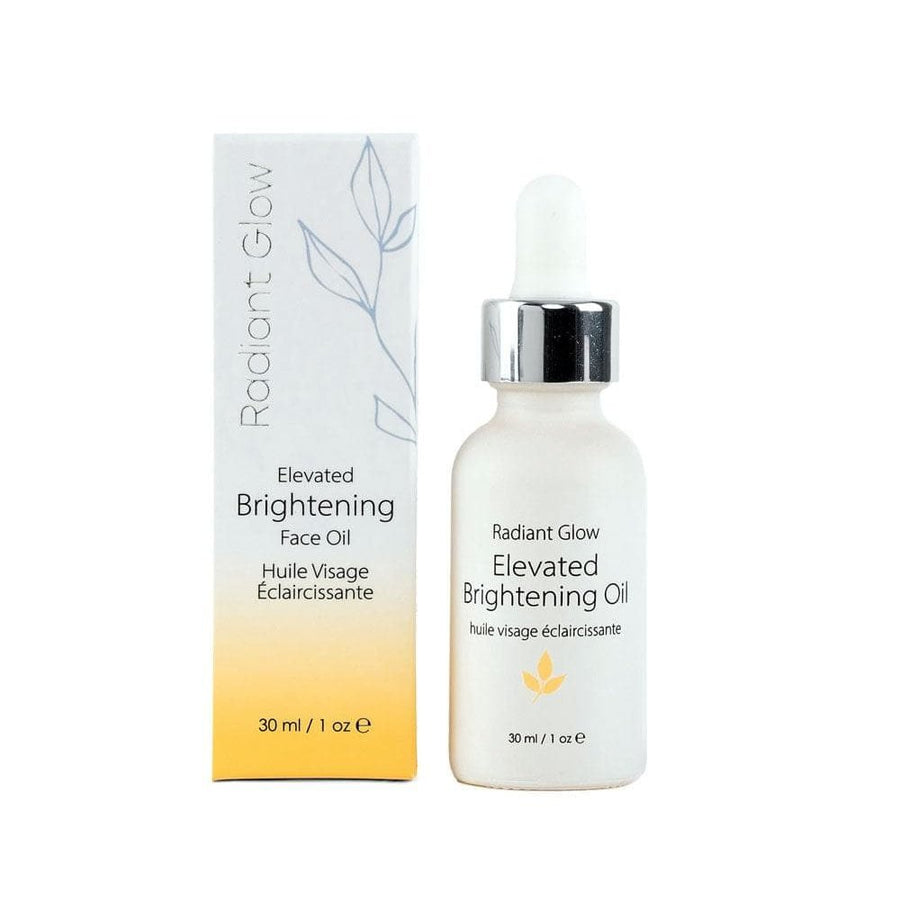
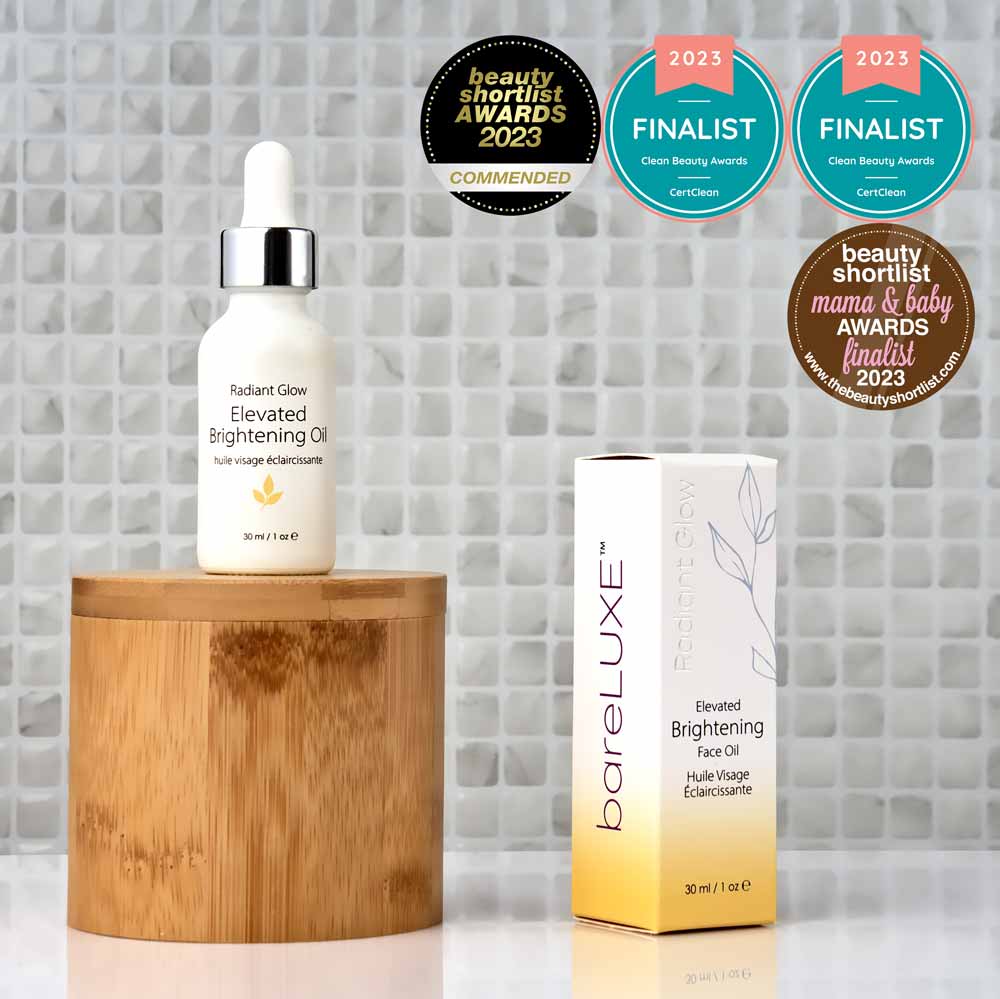
Leave a comment